I recently paid a visit to Great Torrington, a small market town in the north of Devon. The town is sited on an ancient settlement on high ground with a steep drop to the River Torridge below. The Castle remains are surrounded by spectacular views of unspoilt green countryside and rolling hills.
The town used to be called “Toritone” and is recorded in the 1086 Domesday Book as having 95 households. London, the capital of England, was recorded at the time as having 204 households, so this gives some idea of how important a town Toritone once was. Artefacts from Neolithic and Iron Age settlements show that people have lived in the area for thousands of years.
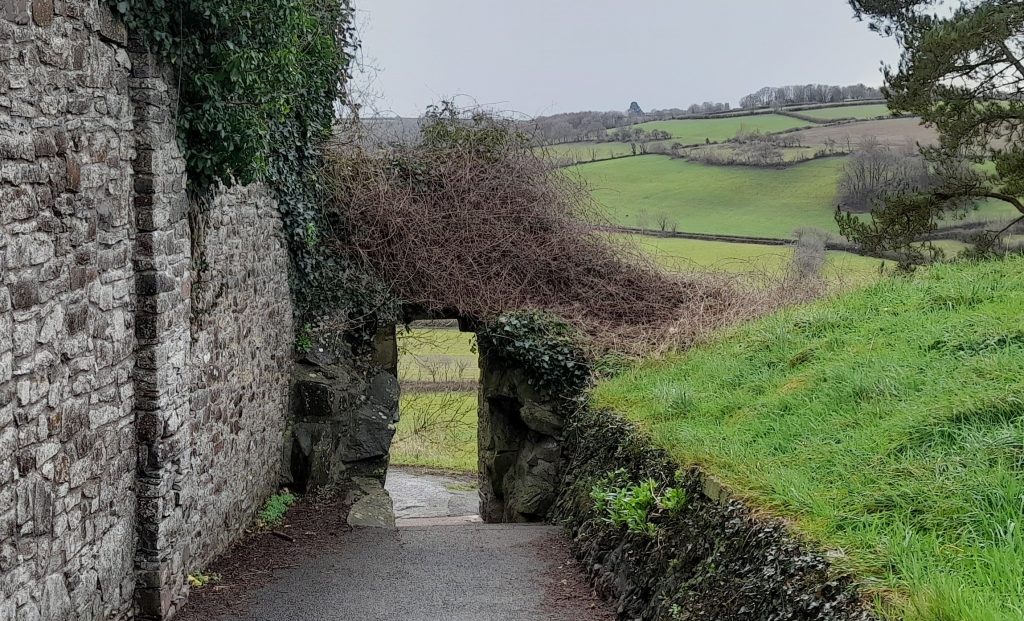
My walk around the town started in the South Street car park and my route took me through this hole in the castle wall leading onto Old Maid’s Walk. I turned left and walked alongside the impressive castle wall.
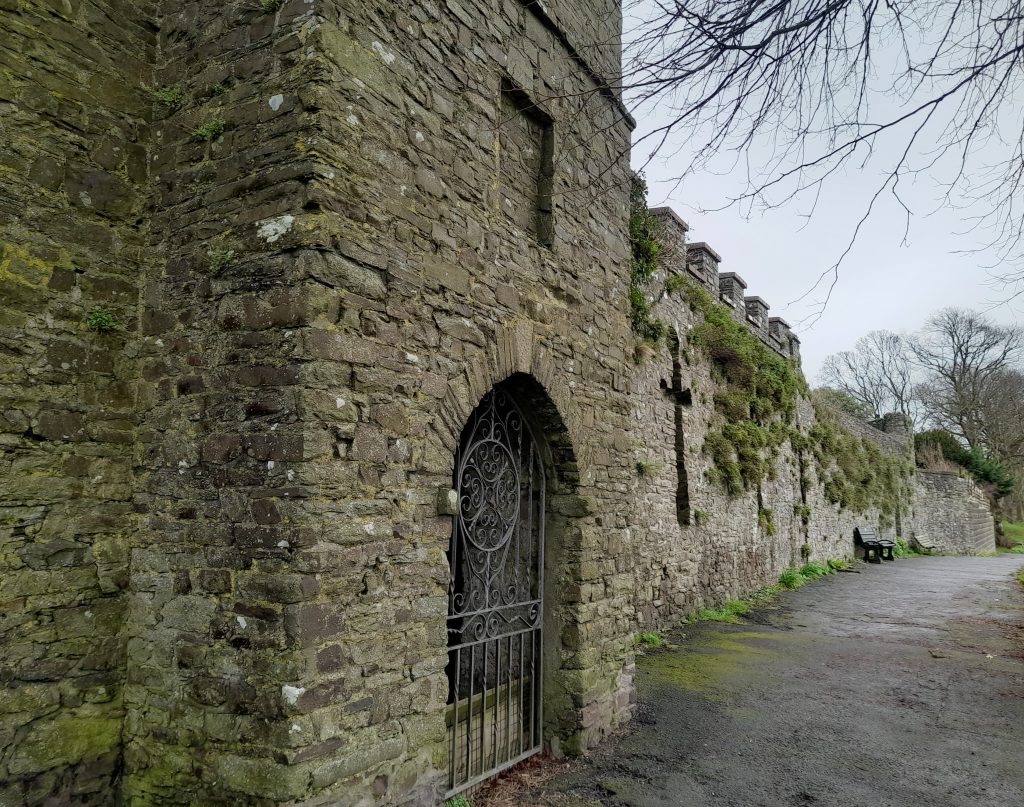
The steep valley below would once have been heavily forested and inhabited by bears, wolves and eagles. The tribes of Devon were known as Dumnonii and they put up brave resistance to the Romans when they invaded in 43 AD. The Roman Emperor Vespasian overcame their resistance with a violent military campaign from his Isca base in Exeter.
Along the path, there are interesting facts displayed on noticeboards. One tells of the Rolle Canal. Built in the 1820s by Lord Rolle, it transported lime from Bideford to the kilns along the valley for use on the land to create fertile soil. With the arrival of the railway in 1872, the canal closed and was filled in to become Rolle road, now a footpath and a pleasant walk. I found this information particularly interesting as several of my ancestors came from this area, and worked on the canal and also at Stevenstone House, a mansion owned by Lord Rolle.
Also down in the valley below lies the Waterloo Monument, erected in 1818 by the Ladies of Great Torrington to commemorate the Battle of Waterloo. The inscription plate, high up on the monument is said to be made from one of the cannons from the battle.
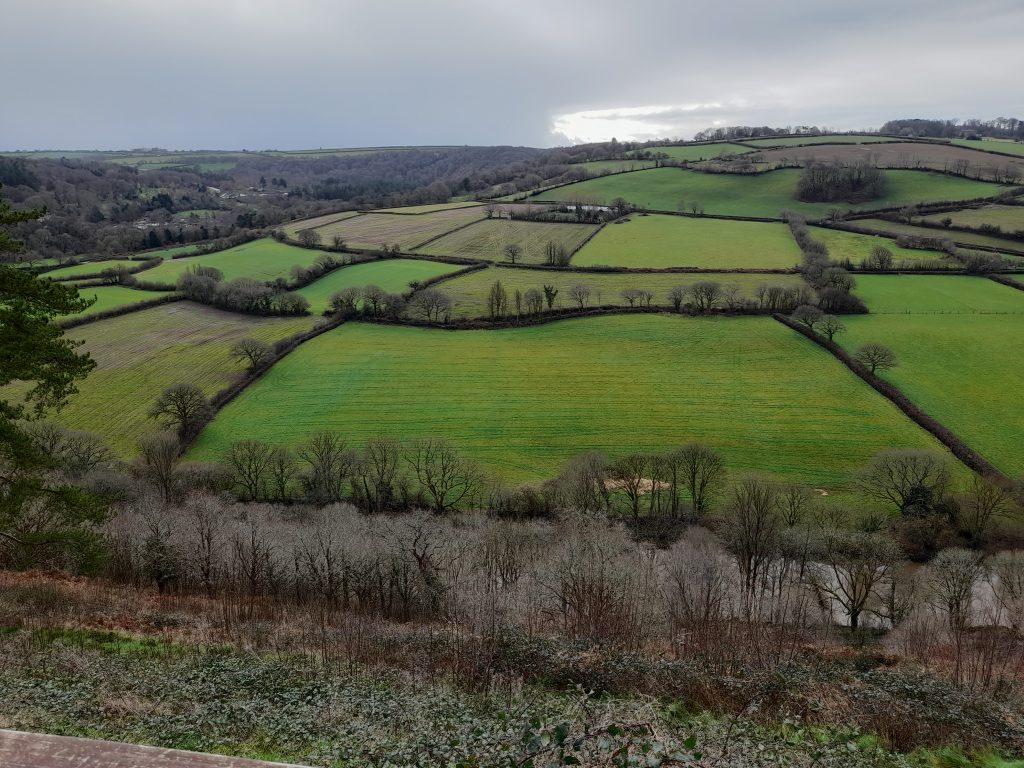
Off to the right, the Torrington Common stretches for miles. The Commons were given to the people of Torrington by the Lord of the Manor, Robert Fitzrobert at the end of the 12th century. We have recently explored parts of the commons and there are some lovely walks. To the right, just before the settlement of Taddiport lie the long narrow “Leper Fields” which are the remains of the medieval strip field system. The name of Taddiport is said to derive from the toad-like appearance of the residents of the leper colony, once sited there.
Continue to walk along Old Maid’s walk and then take the uphill path to the left where a large mound can still be seen. This, and the castle wall, is all that remains of a motte and bailey castle that was built c 1090. The keep of the castle would have sat on top of the motte mound, surrounded by a mixture of wooden and cob buildings.
Great Torrington is known as the “town that burnt twice”. The first fire was during the civil war known as The Anarchy (1135 – 1153 AD). The fight for the throne was between the former king’s daughter, Matilda, and her cousin, Stephen. Torrington supported Stephen, and the castle and town were attacked and burnt.
The Battle of Torrington 1646
The second, and better-known battle, took place during The English Civil War. A disagreement between King Charles and many of his nobles, concerning religious freedoms and the power of the monarchy escalated into a civil war. Between 1642 and 1651 battles raged throughout England, Ireland, and Scotland, and the king was tried and executed in 1649. North Devonians were divided in their loyalties, with Bideford and Barnstaple being pro-Parliamentarian, and solely Great Torrington supporting the king.
A 10,000 strong Parliamentarian army approached from South Molton on the evening of 16th February, and a fierce battle soon developed with vicious street to street fighting. A stray spark ignited a store of 80 gunpowder barrels in the church which exploded, blowing off the roof and killing many townspeople, as well as around 200 prisoners held in the church. The manor house was heavily damaged, and the castle, and the church, were largely destroyed. In the Restoration of 1660, Charles II awarded grants to towns that had remained loyal to the crown, and in Great Torrington, much of the market square and guildhall was repaired.
Proceed through the car park by the Castle Mound and turn right into the lane that leads to the rear entrance to the Pannier Market. This is a pleasant arcade with a number of small shops and cafes.
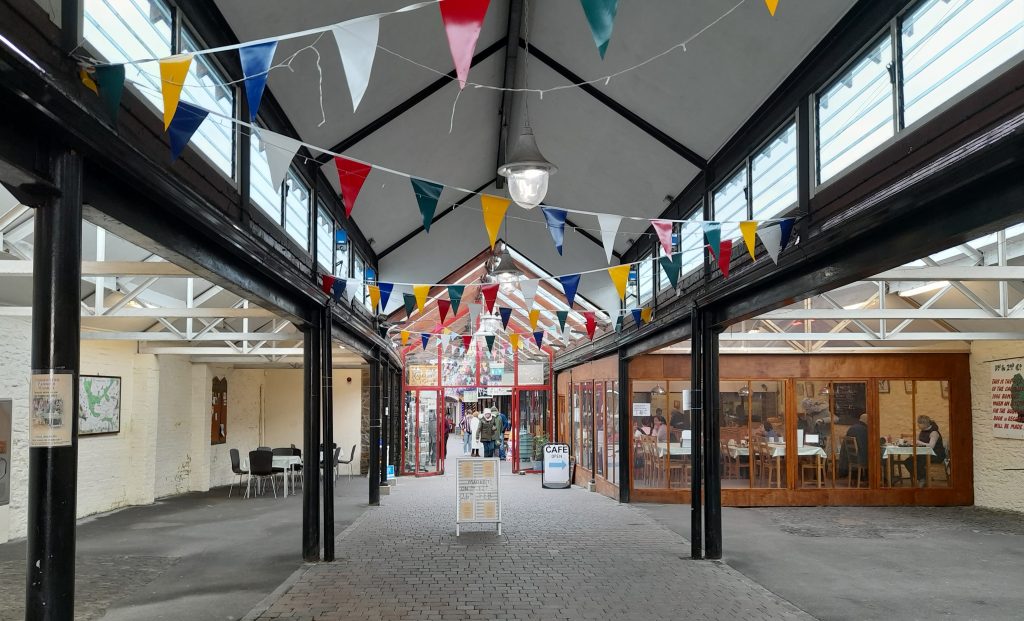
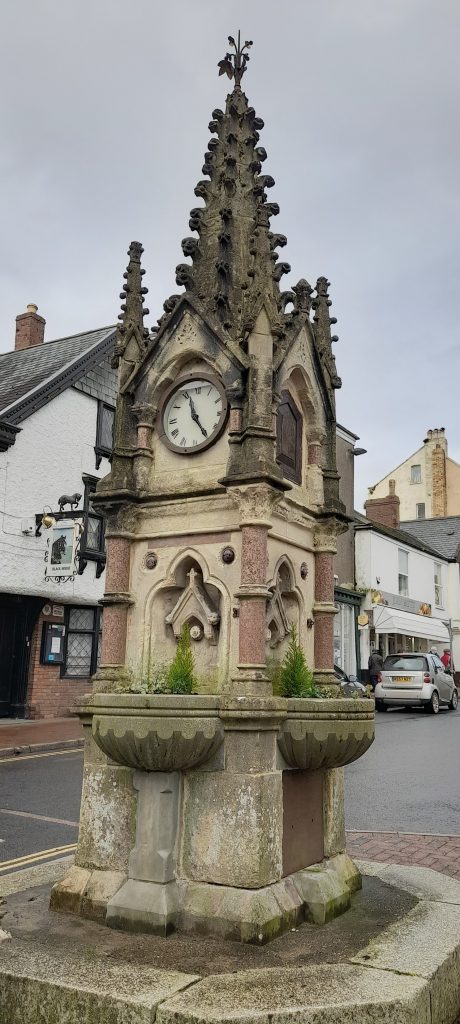
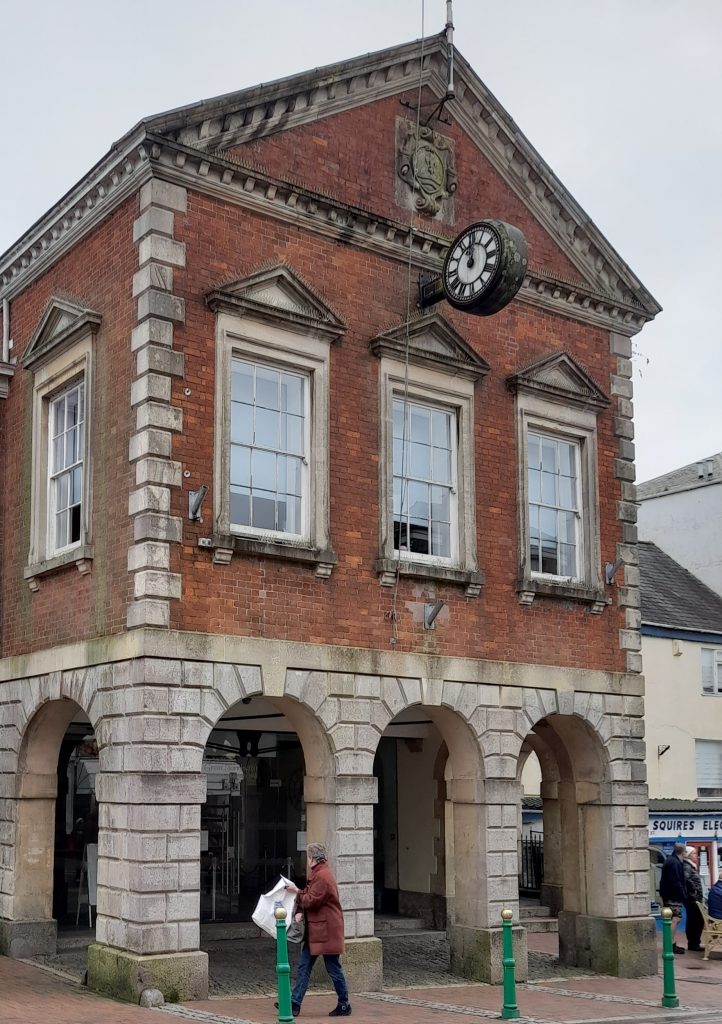
Having left the Pannier Market, cross the road to the Town Square, which was once one of the largest in Devon. In the past, the town was famous for saddlery, boots and gloves. The Guildhall was modernised and extended in the 1860s.
Leaving the town square via an entrance in the far corner, turn right and then left into the churchyard.

The earliest record of a church in Great Torrington was recorded in 1259, and parts of the nave and chancel date to this period. Much of the church was rebuilt in 1651 after the Civil War explosion. Outside the church, there is an inscription which reads “This church was blowen up with the powder Febrye 16th 1645 and rebuild 1651.”

On returning to South Street car park, I noticed a sign pointing to “The Secret Garden”. The garden is open to the public free of charge and is in memory of five children who lost their lives in a fire in 1942. Although not large, and not far from the busy car park, the garden was strangely quiet and secluded. On my visit in February, there was little in the way of flowers to be seen, but I intend to visit again in the summer when I suspect it will be full of flowers.
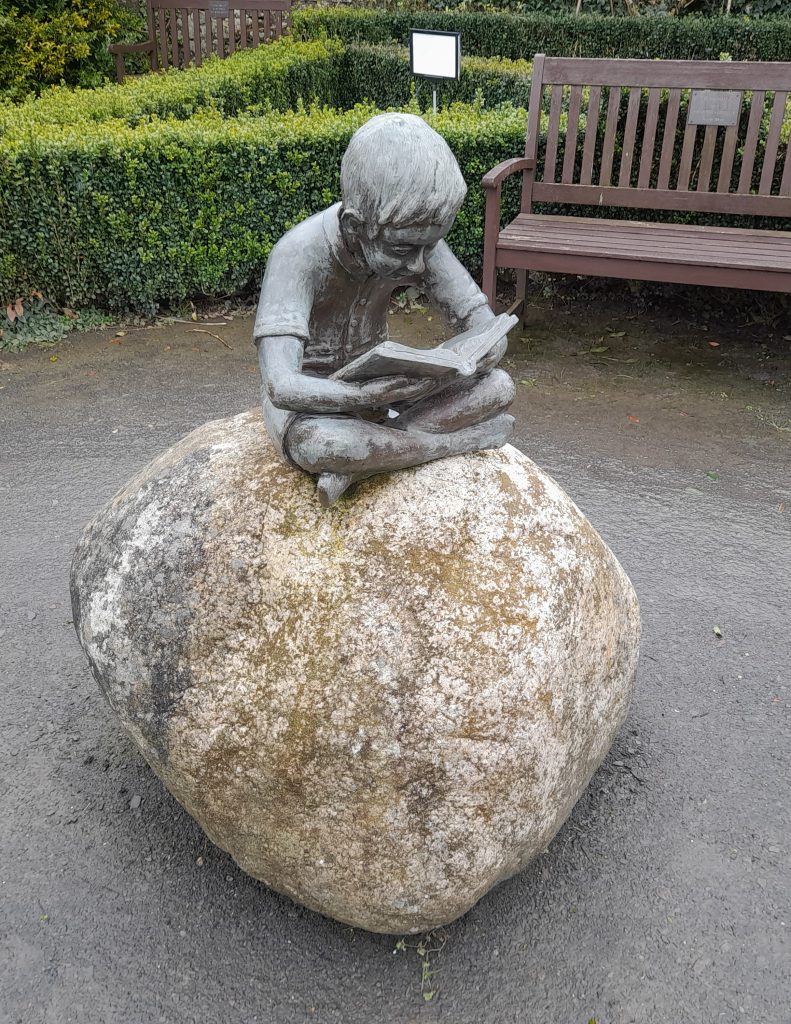
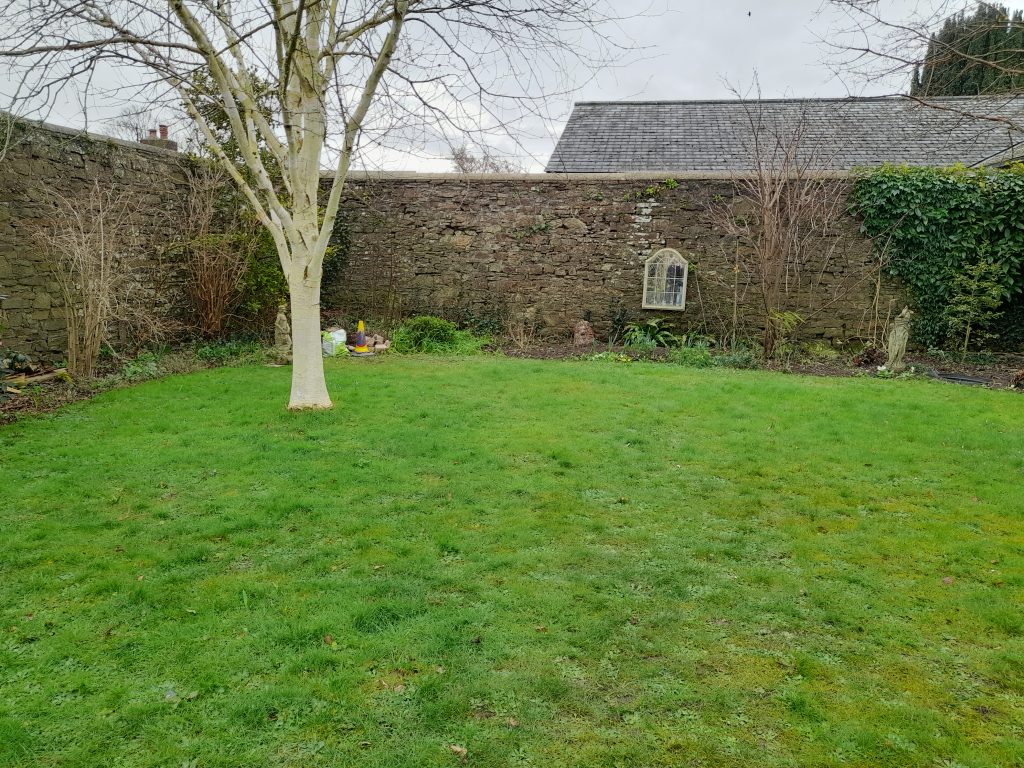
Torrington is an interesting town, especially for anyone keen on history and I enjoyed my visit.
0 Comments